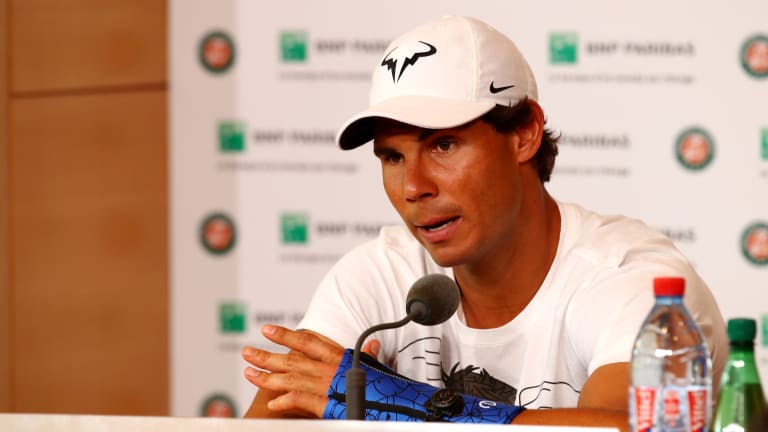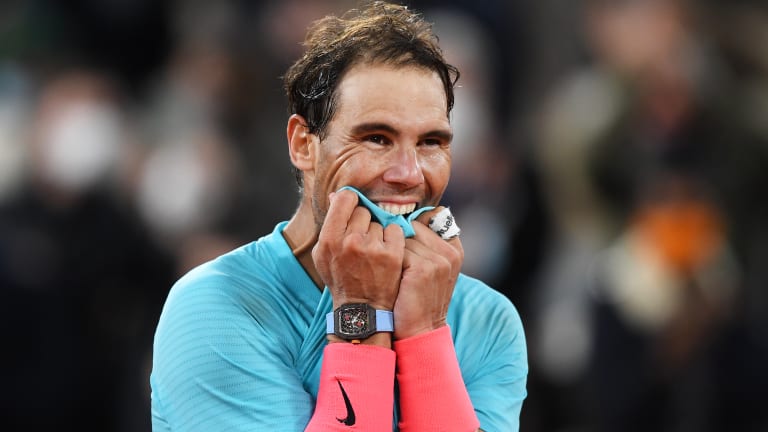Roland Garros
Nadal brings down curtain on unique Roland Garros in the right spirit
By Oct 14, 2020Roland Garros
Rafael Nadal to be honored with 'exceptional' tribute on opening day of Roland Garros
By Apr 17, 2025Roland Garros
French Open organizers introduce draw to access ticket sales
By Jan 07, 2025Roland Garros
Coaches Corner: Juan Carlos Ferrero proves essential to Carlos Alcaraz's Roland Garros success
By Jun 14, 2024Roland Garros
What’s next for Novak and Nadal? Four ATP storylines after the Paris fortnight
By Jun 10, 2024Roland Garros
Naomi’s resurgence, Iga on grass: Four WTA storylines after the Paris fortnight
By Jun 10, 2024Roland Garros
Carlos Alcaraz becomes the clay-court champion that he—and we—always knew was possible
By Jun 09, 2024Roland Garros
Coco Gauff wins first Grand Slam doubles title with Katerina Siniakova in dream team debut
By Jun 09, 2024Roland Garros
Coco Gauff is a Grand Slam champion in singles and doubles, exceeding her own expectations
By Jun 09, 2024Roland Garros
From Rafa to Iga: as one owner of Roland Garros departs, a new one has moved in
By Jun 08, 2024Roland Garros
Nadal brings down curtain on unique Roland Garros in the right spirit
The pieces all fit—fierce competitive spirit, the ability to handle pain; the sensitivity, the sportsmanship and the awareness of others. Said Rafa, “I am not as happy as usual because the situation is tough for most of the people around the world.”
Published Oct 14, 2020
Advertising

Nadal brings down curtain on unique Roland Garros in the right spirit
© 2016 Getty Images
Advertising

Nadal brings down curtain on unique Roland Garros in the right spirit
© Getty Images